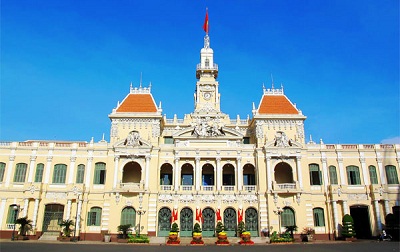- Vietnam Culture
- Vietnam – a perfect country
- The tranquil beauty of Pho
- Geology Museum on Ha Long
- Ha Noi gets the best
- Len Dong: an ancient shaman
- 100 Essential Vietnamese Words for
- Vietnamese Writing
- Vietnamese Langguage
- OX racing festival
- Vietnam National Day
- Vietnam New Year – The
- Perfume Pagoda festival
- Mid-Autumn Festival in Vietnam
- Hung king festival
- Vietnamese Ca tru
- Vietnamese Kites — History and
- Vietnamese Lanterns — What They
- Vietnamese Embroidery
- Vietnam is a culturally diverse
The Vietnamese language is a fascinating gateway to the rich history, vibrant culture, and warm hospitality of Vietnam. As the national language of the country, Vietnamese is spoken by over 96 million people in Vietnam and millions more in the Vietnamese diaspora worldwide. Whether you’re learning for travel, work, or cultural appreciation, Vietnamese is a rewarding and unique language to explore.
The Roots of Vietnamese
Vietnamese (“Tiếng Việt”) belongs to the Austroasiatic language family, which also includes Khmer and other languages spoken in Southeast Asia. It has been influenced by a variety of languages throughout history:
- Chinese Influence: For over a millennium, Chinese was the dominant language of administration and education in Vietnam. As a result, many Vietnamese words, especially those related to government, culture, and science, have Chinese origins.
- French Influence: During the French colonial period (1858–1954), the Vietnamese language absorbed numerous French loanwords, particularly in areas like food, fashion, and technology.
- Modern Influences: In recent decades, English has become a significant source of borrowed words, especially in business and technology.
The Unique Characteristics of Vietnamese
1. Tonal Nature
Vietnamese is a tonal language with six distinct tones, each altering the meaning of a word. For example, the syllable “ma” can mean “ghost,” “but,” “rice seedling,” “cheek,” “horse,” or “grave,” depending on the tone used. Mastering the tones is essential for effective communication.
2. Romanized Script: Chữ Quốc Ngữ
Unlike many of its regional neighbors, Vietnamese uses a Romanized script called “Chữ Quốc Ngữ” (national script). This writing system was developed by Portuguese missionaries in the 17th century and later refined by French linguists. It replaced the Chinese-based script, making Vietnamese one of the most accessible Asian languages for learners familiar with the Latin alphabet.
3. Syllabic Structure
Each Vietnamese word is typically one syllable, and these syllables are either standalone words or components of compound words. This structure makes the language concise and rhythmic.
Dialects in Vietnamese
Vietnamese has three main dialects, corresponding to the country’s three regions:
- Northern Dialect (Hà Nội): Considered the standard dialect for education and media. It is widely understood across Vietnam.
- Central Dialect (Huế): Known for its distinct pronunciation and vocabulary, this dialect can be challenging for both native and non-native speakers.
- Southern Dialect (Hồ Chí Minh): Characterized by a relaxed pronunciation style and different tonal patterns compared to the northern dialect.
Learners are encouraged to choose a dialect based on their purpose—Northern Vietnamese for formal use, or Southern Vietnamese for casual settings in the south.
Why Learn Vietnamese?
- Cultural Immersion: Understanding Vietnamese allows deeper connections with the country’s literature, music, and traditions.
- Travel: Vietnam’s breathtaking landscapes, bustling cities, and delicious cuisine are best experienced with basic language skills.
- Business Opportunities: As Vietnam’s economy grows, proficiency in Vietnamese can open doors in trade, education, and tourism sectors.
- Personal Enrichment: Learning Vietnamese enhances cognitive skills and offers a unique linguistic challenge with its tones and vocabulary.
Tips for Learning Vietnamese
- Master the Tones: Start by listening to native speakers and mimicking their tonal patterns.
- Learn Common Words: Begin with essential vocabulary and phrases for daily use.
- Practice Listening: Watch Vietnamese shows, listen to music, or follow podcasts to familiarize yourself with the rhythm of the language.
- Engage with Speakers: Join language exchange programs or practice with Vietnamese friends.
- Use Resources: Apps, textbooks, and online courses are invaluable tools for beginners.
A Language of Culture and Connection
Vietnamese is more than just a means of communication; it’s a bridge to understanding Vietnam’s soul. From the melodic tones of traditional songs to the poetry of daily conversations, learning Vietnamese offers a profound appreciation of one of Asia’s most captivating cultures.
So why wait? Bắt đầu ngay! (Start now!)














